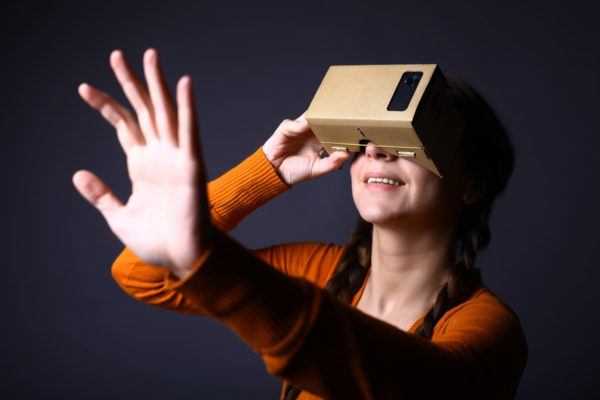Virtual reality is one of the latest tools to hit education, and educators across the country are excited to engage students with dynamic, immersive visuals and virtual field trips. But getting started can be overwhelming, especially with different platforms and devices on the market.
During a virtual reality session at TCEA 2017, three educators shared their experience using Google Expeditions with students.
To get started, educators need a teacher tablet; virtual reality viewers; student devices; and a peer-to-peer enabled wi-fi network, hotspot, or closed network, said Julie Brem, a librarian at Colleyville Heritage High School in Grapevine-Colleyville ISD. Most students at the secondary level will have their own devices, and those who don’t can share or borrow school-owned devices. Larger device sets will likely be needed at the elementary level.
Students were exceptionally engaged in the experiences, turning around to get 360-degree views of their surroundings and reaching out to try and grab objects. During one unit around Christmas, students came to school in pajamas and took a virtual trip on the Polar Express, Brem said.
Cooperation between different departments is important, too.
The educators would not have been able to coordinate without collaboration between instructional technology, librarians, and technology services,” said Janie Stach, a K-12 instructional technology coordinator in the district, and Kara Johnson, an elementary librarian in the district.
(Next page: Virtual reality resources for educators; how 3 teachers use the technology in their classrooms)
Educators can explore virtual reality communities online, such as the TES collection of teacher-created Google Expeditions resources or the Google+ Expeditions group.
Check out this Google Doc for a list of available expeditions.
Current expeditions include the circulatory system, industry in the Victorian era, Paris, Shanghai, skyscrapers of Europe, and the San Diego Zoo.
And by joining user communities, educators can gain inspiration from how their peers use the technology.
Teachers in the Community Consolidated School District 62 in Illinois introduced Google Expeditions to enhance learning for their students, as illustrated in this Google blog post. Sarah Murphy, a science teacher at Algonquin Middle School, uses Google Expeditions to show her students processes such as those that formed the Grand Canyon. Murphy said her students are more engaged and exhibit deeper thinking as they ask more complicated questions relating to their lessons.
Elizabeth Moravec, an art teacher at Terrace Elementary School and Orchard Place Elementary School, uses Google Expeditions and DIY virtual reality to bring artwork to life for students, giving them examples of perspective and size as they relate to famous works of art and landmarks.
Matt Peebles, a fourth-grade teacher at Plainfield Elementary School, uses Google Expeditions to illustrate challenging math concepts and relate them to real-world objects, situations and landmarks to help students relate their lesson to something they’re familiar with.
- 4 ways to support work-based learning - April 23, 2024
- Prioritizing inclusivity in game-based learning - April 22, 2024
- Friday 5: Universal Design for Learning - April 19, 2024


